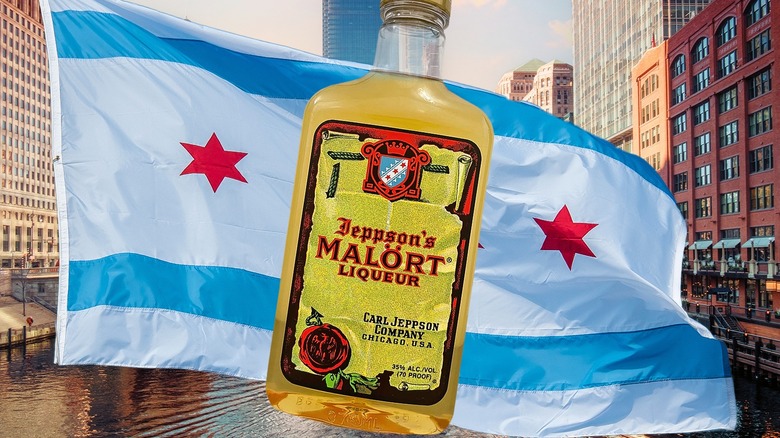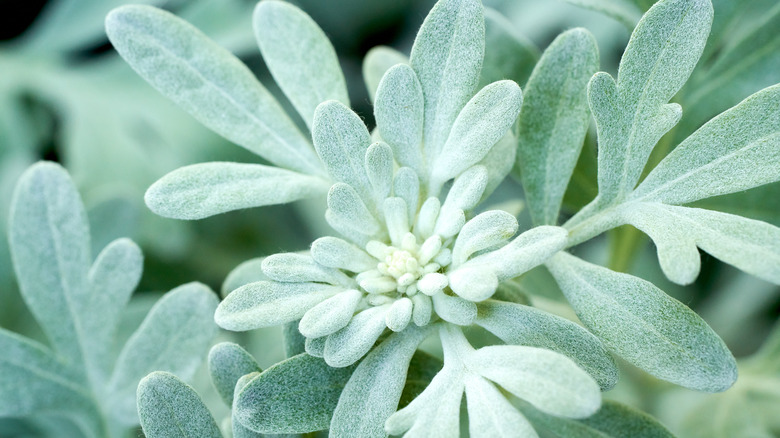How Malört Became The Chicago Liqueur Everyone Loves To Hate
Bitter is a celebrated flavor in the world of alcohol: Cocktails are often balanced by bitter components and bitter aperitifs are drunk before a meal to stimulate the appetite. But what amount of bitter makes alcohol bad? While a question of taste preference is often subjective, many would agree that a divisive liqueur called Malört is bitter and harsh to the point of being gross. Despite this, it remains a celebrated drink in Chicago — a city better known for its hot dogs, rather than intense liqueur.
Like other bitter liqueurs, Malört, the American version of a Swedish liqueur called bäsk, is an herbal digestif. The main ingredient that flavors its liquor base is wormwood, a bitter herb that is thought to aid digestion — it's also found in the better-known, myth-shrouded absinthe. Its base is a neutral grain spirit made of wheat, potato, or rice. As the Jeppson's Malört's website states, this liqueur is "not a drink for everyone, but we're not everyone."
The flavor has been compared to gasoline, bug spray, or tires on fire; more appealing flavor notes include grapefruit and licorice. So, why would anyone drink bitter-tasting Malört? It has come to be known as a coming-of-age drink, sometimes sipped on as a dare or even served as a prank to an unsuspecting victim. However, some intentionally order Malört, often as a shot or in a cocktail, because it is considered to be a drink representative of the city of Chicago: Tough.
How Malört arrived in Chicago
The Swedish-inspired beverage surfaced in Chicago thanks to a Swedish immigrant by the name of Carl Jeppson. During Prohibition in the 1920s, he created the take on bäsk, which served as a sneaky way to sell alcohol; the liqueur was essentially so unappealing and herb-forward, that it was passed off as medicine by authorities. Jeppson claimed that the wormwood-infused beverage assisted in stomaches and ridding the body of parasites. There was enough demand for the liqueur amongst other Swedish immigrants to keep his business afloat until he eventually sold it. The memorable alcohol was also consumed by other immigrant groups in Chicago, but its popularity never really made it out of the Windy City.
In the 1930s, the liqueur was purchased by another man, George Brode, who bottled and branded it as Jeppson's Malört. According to the company's website, Brode marketed the drink as the "dry-est, dry liquor" and added a stem of wormwood into each glass bottle. It was always considered to be a harsh drink, enjoyed by blue-collar workers, often drank alongside an Old Style beer. There was never a point in history when Malört reached the ranks of other strong digestifs, such as Fernet, though.
In more recent years, Malört was thrust into the spotlight thanks to Chicago bartenders and curious mixologists who wanted to keep this historical beverage alive, so the bitter liqueur began to appear in more commonly in cocktails in the city. CH Distilling purchased the brand in 2019, solidifying the drink's survival. Now, Malört continues to be celebrated almost as a mascot of the city, drank for the novelty and intensity of a flavor that you'll surely always remember.

